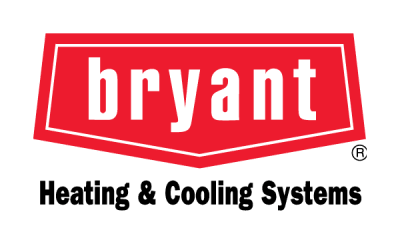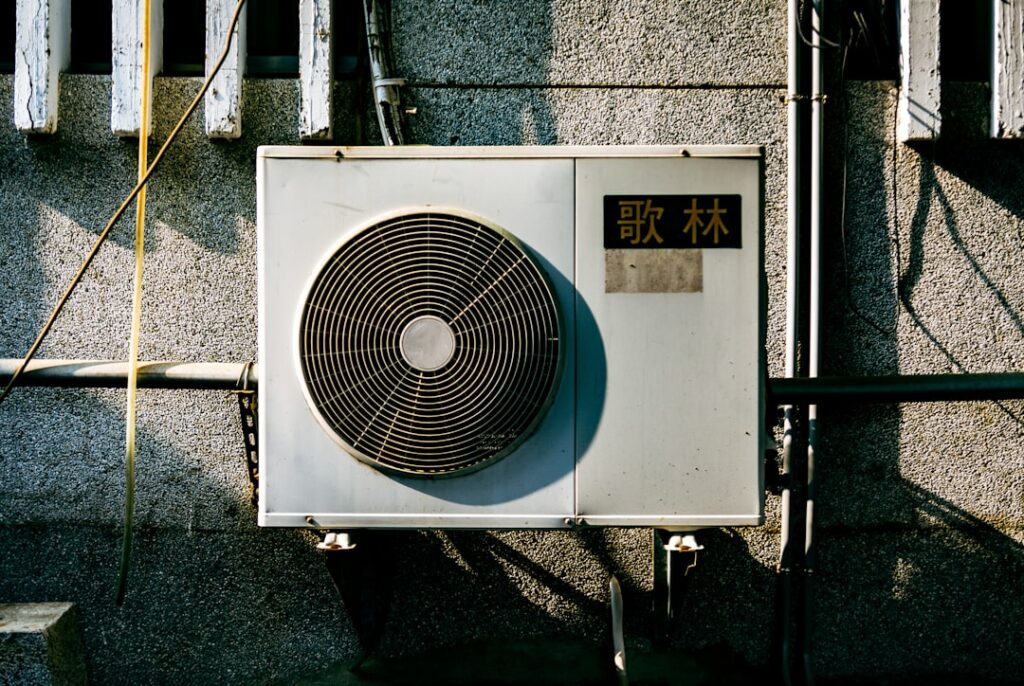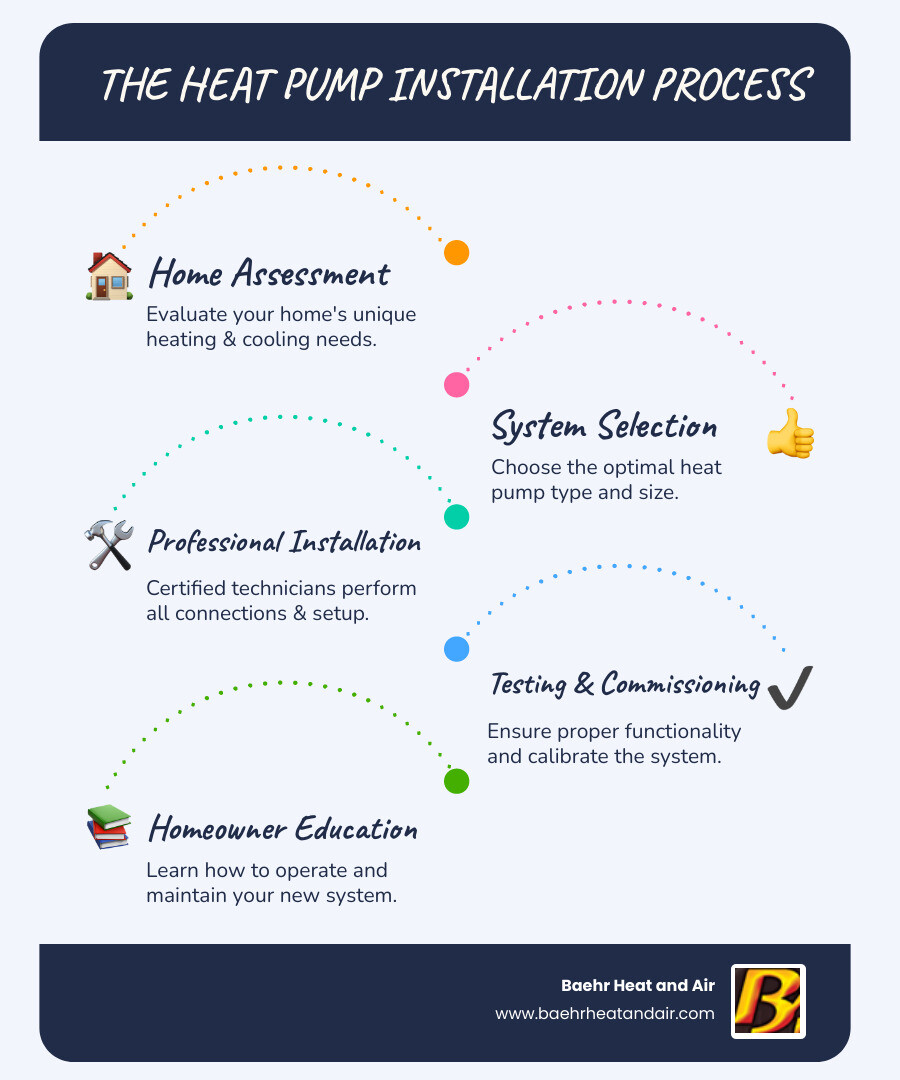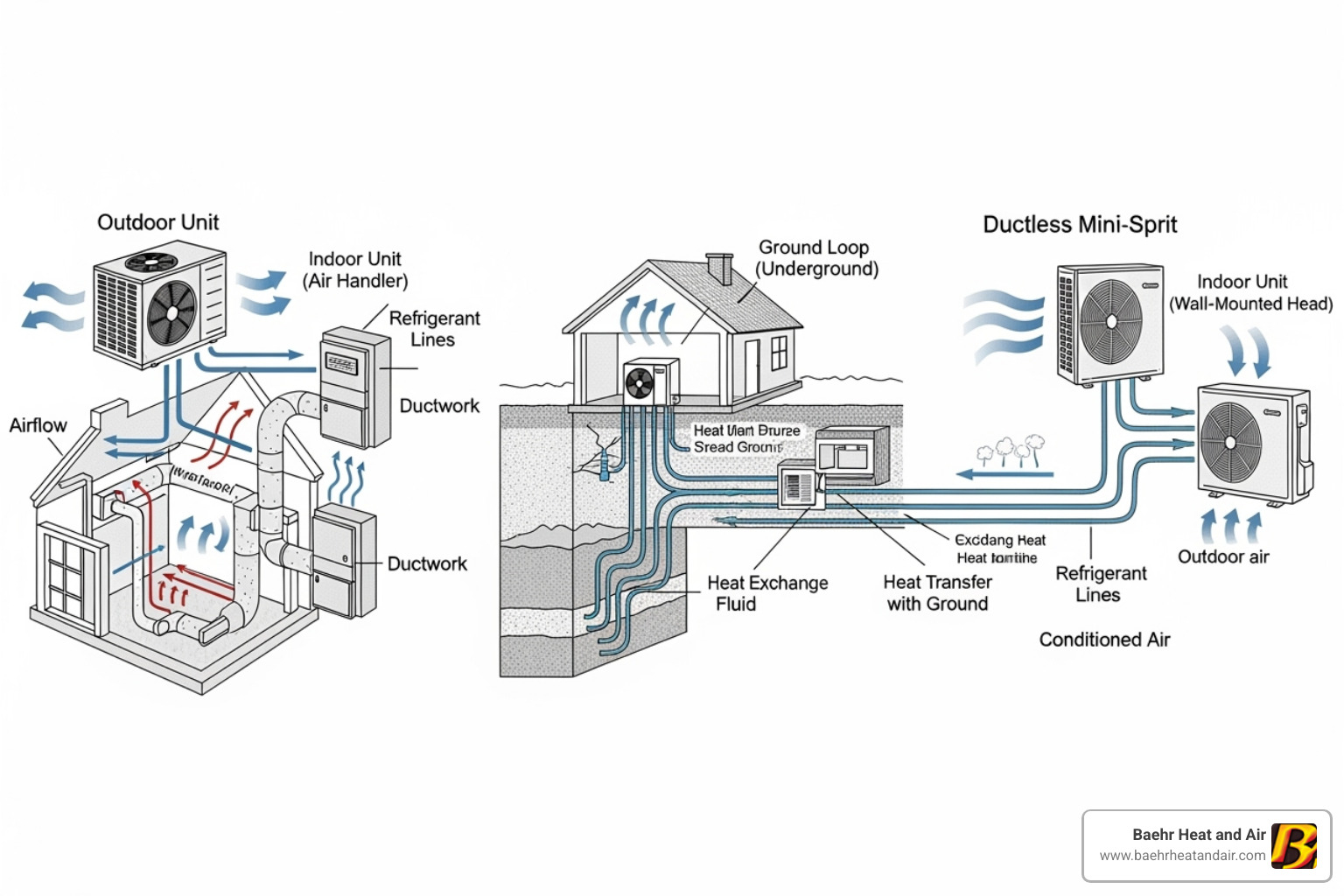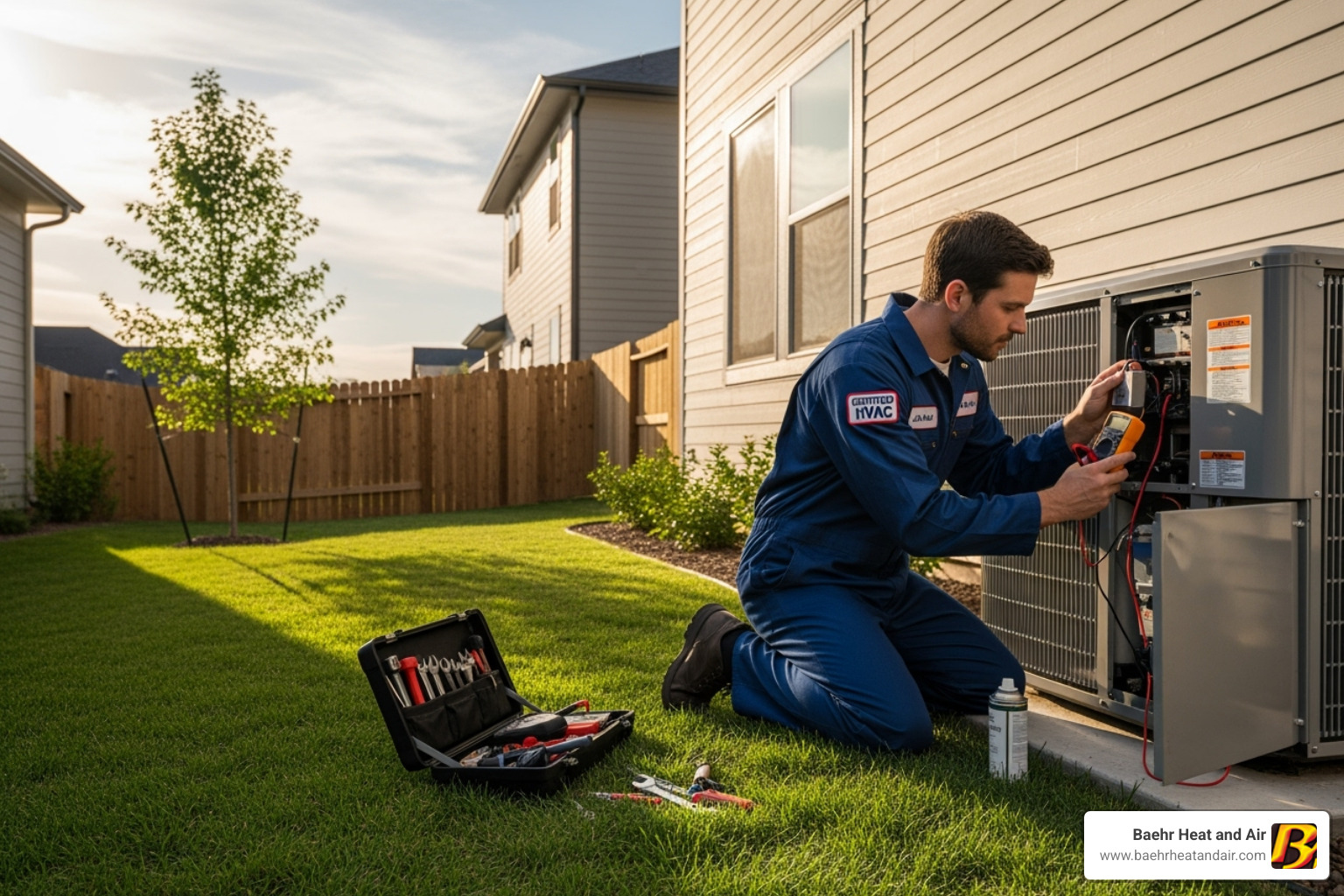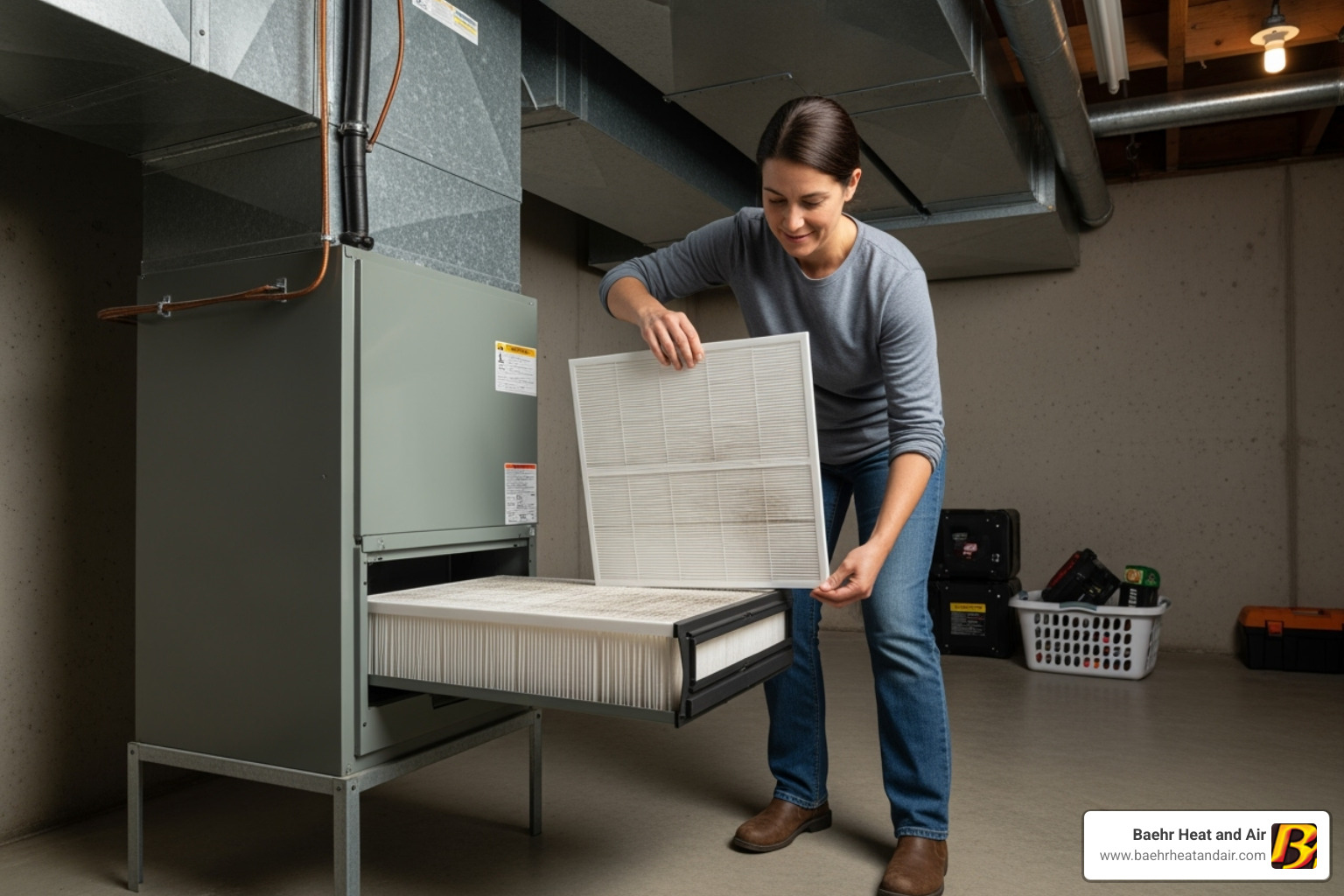Why Heat Pump Installation is the Smart Choice for Your Home
Home heat pump installation is becoming the go-to solution for homeowners wanting efficient year-round comfort in one system. Unlike traditional HVAC systems that require separate units for heating and cooling, heat pumps do both jobs while using significantly less energy.
What makes heat pumps special:
- All-in-one solution – Provides both heating and cooling from one system
- Energy efficient – Can reduce electricity use for heating by up to 75% compared to electric resistance heating
- Year-round comfort – Works in both summer and winter
- Environmentally friendly – Uses renewable energy from the air or ground
- Cost savings – Lower energy bills and potential rebate opportunities
Heat pumps work by transferring heat rather than generating it. In winter, they extract heat from outdoor air and move it inside. In summer, they reverse the process, removing heat from your home like an air conditioner.
The installation process typically involves:
- Home assessment – Evaluating your home’s heating and cooling needs
- System selection – Choosing the right type and size heat pump
- Professional installation – Certified technicians handle all connections and setup
- Testing and commissioning – Ensuring everything works properly
- Homeowner education – Learning how to operate and maintain your new system
Modern heat pumps are highly effective even in cold climates. Cold climate heat pumps heat efficiently even when temperatures drop to -20°C, making them suitable for most regions.
Before You Install: Key Factors for Your Home
Getting ready for home heat pump installation is an important step. Before equipment arrives, we need to consider several factors to ensure your new heat pump will work efficiently and keep you comfortable year-round.
Home Efficiency: The Foundation of Success
Think of your home as a thermos bottle. The better it holds temperature, the less work your heat pump has to do. Home assessment starts with evaluating your home’s overall efficiency, focusing on insulation and air sealing. If your home has poor insulation or drafty windows and doors, it’s like trying to heat a house with all the windows open!
Proper insulation and air sealing are absolutely crucial before installing your heat pump. Research consistently shows that weatherizing your home first – especially if you’re replacing an older gas heating system – ensures optimal performance and maximum cost savings. Your heat pump will thank you with lower energy bills and better comfort.
Getting the Size Just Right
Heat pump sizing follows the Goldilocks principle – it needs to be just right. Too small, and your system will struggle on the hottest and coldest days, running constantly and driving up your energy bills. Too big, and it will short-cycle, leading to poor humidity control and unnecessary wear and tear.
This is where a Manual J load calculation becomes essential. This detailed assessment considers your home’s square footage, insulation levels, window types, local climate, and even how many people live there. It’s the gold standard for ensuring your new system perfectly matches your home’s unique heating and cooling needs.
Ductwork: Your Home’s Air Highway
If you have existing ducts, we need to give them a thorough ductwork inspection. Here’s something many homeowners don’t know: heat pumps need bigger ducts than furnaces to move the same amount of air efficiently. Leaky or undersized ducts are like having a sports car with flat tires – you won’t get the performance you’re paying for.
We’ll check for leaks, proper sizing, and overall compatibility to make sure your heat pump can distribute conditioned air effectively throughout every room in your home.
Electrical Requirements
Heat pumps run on electricity, and your home’s electrical panel capacity needs to be up to the task. Sometimes a new, high-efficiency heat pump requires dedicated circuits or even a complete electrical panel upgrade. For all-electric or ground-source heat pumps, upgrading to 200-amp service is often necessary.
Don’t worry – we’ll assess your current electrical system to ensure it can safely support your new heat pump without any issues.
Making It Affordable
We know that investing in a heat pump is a big decision. That’s why we always help homeowners explore available rebates and financing options, including potential tax credits. Various programs are often available to help offset the initial investment, making your dream of efficient year-round comfort more accessible. You can Explore ENERGY STAR® certified heat pumps to find models that qualify for efficiency-based incentives.
Choosing the Right Type of Heat Pump
When it comes to home heat pump installation, you have several excellent options, each with unique advantages for different situations.
Air-source heat pumps are the most popular choice, and for good reason. They transfer heat between your house and the outside air, and modern versions can reduce your electricity use for heating by up to 75% compared to electric resistance heating. They’re versatile, relatively easy to install, and work great for most homes.
Ground-source (geothermal) heat pumps are the ultimate in efficiency. They tap into the earth’s stable underground temperatures, using 61% less energy than standard models. While the installation is more complex, the energy savings are substantial, and these systems can last up to 24 years for indoor components and over 50 years for the ground loop.
Ductless mini-split systems are perfect for homes without existing ductwork or when you want zoned heating and cooling in specific areas. They deliver conditioned air directly to individual rooms, making them an excellent choice for older homes or additions. Learn more about the Benefits of Mini Split Heat Pumps.
Hybrid or dual-fuel systems give you the best of both worlds. These combine a heat pump’s efficiency with a gas furnace’s reliability. The heat pump handles most of your heating needs in milder weather, while the furnace kicks in during extremely cold days.
Understanding Cold Climate Heat Pumps
“But what about our cold winters?” It’s one of the most common questions we hear, and it’s completely valid. For years, heat pumps were mainly used in warmer climates, but that’s changed dramatically.
Cold climate heat pumps differ from standard models through advanced compressor technology and specially designed refrigerants. These innovations allow them to extract heat from outdoor air even when temperatures drop well below freezing. Modern cold climate heat pumps can operate efficiently in sub-freezing temperatures down to -20°F, potentially reducing your annual energy bills by as much as 30%.
When selecting a heat pump for colder areas, pay attention to the HSPF rating importance (Heating Seasonal Performance Factor). This measures heating efficiency over an entire season, with higher ratings meaning greater energy savings. Market-available air-source heat pumps range from 7.1 to 13.2 HSPF.
For suitability for colder regions, we recommend looking for systems with an ENERGY STAR Cold Climate label if you regularly experience sub-freezing temperatures. You can Learn more about ENERGY STAR Cold Climate heat pumps.
The Professional Home Heat Pump Installation Process
You’ve done your research, chosen the perfect heat pump, and prepared your home. Now comes installation day.
Professional installation ensures safety, code compliance, and long-term performance. Our certified installers handle everything from refrigerant recovery (per EPA standards) to precise electrical and refrigerant connections, so your system runs exactly as designed.
Want to dive deeper into what we do? Check out our detailed Process of Heat Pump Installation and find the Professional Heat Pump Installation Service Benefits that come with choosing experienced technicians.
Pre-Installation Assessment for Your Home Heat Pump Installation
Before we begin, we complete a final site evaluation to confirm the selected system size and type, assess ductwork and airflow, plan ideal indoor/outdoor unit placement with proper clearances, and review electrical requirements so there are no surprises on installation day.
What to Expect During Your Home Heat Pump Installation
Installation day is efficient and coordinated. Many projects finish in a single day; larger or more complex jobs may take two to four days.
- Removal of old equipment
- Refrigerant recovery following EPA standards
- Outdoor unit placement and securing on a level composite pad, lifted to prevent water damage
- Indoor unit (air handler) installation in the designated location
- Connecting refrigerant and electrical lines with proper tools and techniques
- Condensate drain setup with safeguards
- Thermostat installation, wiring, and setup
Final Steps: Testing and Commissioning
After startup, we verify airflow at registers, confirm refrigerant charge, check static pressure, and calibrate the thermostat. We complete a comprehensive final inspection of electrical, refrigerant, and drainage components. Your homeowner walkthrough covers operation, maintenance, warranty details, and recommended settings so you feel confident using your new system.
After Installation: Maintenance and Maximizing Efficiency
Congratulations! Your shiny new home heat pump installation is complete, and you’re already enjoying that perfect temperature balance throughout your home. But here’s the thing – like a well-tuned car or a thriving garden, your heat pump needs just a little regular attention to keep performing at its best. The good news? Most of this maintenance is surprisingly simple!
Your Heat Pump’s Daily Habits
Think of your heat pump as a creature of habit – it loves consistency! Optimal thermostat settings make all the difference in both comfort and efficiency. Unlike your old furnace that could blast heat quickly, heat pumps work best when they maintain steady temperatures rather than dramatic swings. We recommend keeping temperature changes to no more than 2°C and considering a smart thermostat that learns your schedule. This gentle approach lets your heat pump work in its sweet spot, saving energy while keeping you comfortable.
Regular filter changes might seem like a small thing, but they’re absolutely crucial. Picture your heat pump’s filter as its lungs – when it’s clogged with dust and debris, your system has to work much harder to breathe. A clean filter every three months keeps the air flowing freely and your energy bills in check. During those busy heating and cooling seasons, peek at it monthly. Your heat pump (and your wallet) will thank you!
Don’t forget about your outdoor unit – it’s working hard out there in all kinds of weather! Keeping the outdoor unit clear of debris means giving it space to breathe. Trim back any vegetation, sweep away leaves, and make sure there’s at least two feet of clearance on all sides. Think of it as giving your heat pump its own personal breathing room.
For those bigger maintenance tasks, scheduling annual professional service is like getting a yearly physical for your heat pump. Our technicians will clean those hard-to-reach coils, inspect all the moving parts, and catch any small issues before they become expensive problems. You can learn more about our thorough Heat Pump Maintenance Grass Valley CA services – we make it easy to keep your system running smoothly year after year.
Advantages Over Traditional Furnaces
Now that you’re living with your heat pump, you’re probably noticing some pretty amazing differences compared to traditional heating systems. The energy savings alone are impressive – air-source heat pumps can slash your heating electricity use by up to 75% compared to old electric resistance systems. If you went with a geothermal system, you’re looking at 61% less energy use than standard models. Cold climate heat pumps can cut those annual energy bills by as much as 30%!
But it’s not just about the money (though those lower bills are nice!). Your reduced carbon footprint means you’re doing something good for the planet every single day. Since heat pumps transfer heat instead of burning fossil fuels, your home’s environmental impact drops significantly.
The consistent heating and cooling is something most homeowners notice right away. Gone are those uncomfortable hot and cold spots or that “blast furnace” feeling. Your heat pump delivers gentle, even temperatures that make every room comfortable. Plus, you’re enjoying improved indoor air quality since there’s no combustion happening – no risk of carbon monoxide, and the advanced filtration systems help keep your air cleaner.
One bonus you might not have expected is the better dehumidification. High-efficiency heat pumps pull moisture out of the air more effectively than standard air conditioners, making your home feel cooler and more comfortable even when you set the thermostat a bit higher. If you’re still weighing the benefits, check out our detailed guide on Choosing Between an AC and Heat Pump.
When to Call for Service
Even the best-maintained heat pumps sometimes need a little professional attention. The key is catching problems early – it’s much easier (and cheaper) to fix a small issue than to deal with a complete system breakdown in the middle of winter or summer!
Signs of a problem include unusual noises like grinding, squealing, or banging sounds. If you notice any persistent musty or burning smells, that’s definitely time to call us. Reduced heating or cooling performance is another red flag – if your heat pump isn’t keeping up with your comfort needs or the airflow seems weak, something’s not right.
Watch out for short cycling too – that’s when your heat pump turns on and off frequently instead of running in longer, more efficient cycles. This could mean there’s a sizing issue or a mechanical problem that needs attention.
Don’t ignore those energy bills either! A sudden spike without any change in how you’re using your system often means your heat pump is losing efficiency somewhere. When you notice any of these warning signs, it’s definitely Time for Heat Pump Repair.
Our team is always ready to help with expert Heat Pump Repair Grass Valley CA services. We’ll diagnose the issue quickly and get your system back to peak performance, so you can get back to enjoying that perfect home comfort you’ve come to love.
Frequently Asked Questions about Heat Pump Installation
We get it – making the decision for home heat pump installation comes with plenty of questions! After helping countless homeowners in Grass Valley and surrounding areas, we’ve heard just about everything. Let’s tackle the most common concerns that pop up during our consultations.
How long does a heat pump last?
Here’s some great news: heat pumps are built to be your reliable comfort companion for many years to come! With proper care and annual maintenance, you can expect your heat pump to keep your family comfortable for 10 to 20 years. That’s a pretty impressive lifespan for any major home appliance.
Regular maintenance is absolutely crucial for reaching that upper end of the lifespan range. Think of it like taking care of your car – regular oil changes and tune-ups keep it running smoothly for years longer than if you just ignore it. The same principle applies to your heat pump.
If you’ve invested in a geothermal system, you’re looking at even more impressive longevity. The indoor components typically last around 24 years, while the underground ground loop can keep working efficiently for 50+ years or more! That’s because those underground components are protected from weather, debris, and all the elements that can wear down outdoor equipment.
Signs it might be time for replacement include noticeably reduced heating or cooling performance, strange noises that weren’t there before, or finding yourself calling for repairs more frequently. But with good maintenance, most homeowners get excellent value from their heat pump investment over many comfortable years.
Do I still need a separate air conditioner with a heat pump?
This is one of our favorite questions because the answer is so satisfying: absolutely not! One of the biggest advantages of choosing a heat pump is that it completely eliminates the need for a separate air conditioning system.
Your heat pump is essentially a heating system and air conditioner rolled into one. During summer, it works exactly like a traditional central air conditioner, removing heat from your home and keeping you cool. When winter arrives, it simply reverses the process, bringing heat from outside into your cozy home.
This all-in-one approach means you’re dealing with just one system instead of juggling a furnace and separate AC unit. Fewer moving parts, simpler maintenance schedules, and more space in your utility area – what’s not to love?
How long does a typical installation take?
We know you’re eager to start enjoying your new system, and the good news is that most home heat pump installations move along pretty quickly! For a standard installation, you’re looking at about 4 to 8 hours, and we can often complete everything in a single day.
This means minimal disruption to your daily routine – you might leave for work in the morning with your old system and come home to efficient, quiet comfort from your new heat pump.
However, every home is unique, and some situations require a bit more time and attention. If your home needs extensive ductwork modifications, electrical panel upgrades, or if you’re installing a larger, more complex system, the process might extend to two to four days. We’ll always give you a realistic timeline upfront so you can plan accordingly.
Our team works efficiently while maintaining the highest standards of quality and safety. After all, we’d rather take the time to do it right the first time than rush through and leave you with problems down the road!
Your Partner for Year-Round Comfort
Choosing home heat pump installation isn’t just about upgrading your HVAC system – it’s about changing how you experience comfort in your home. When you invest in a heat pump, you’re choosing a future filled with consistent year-round comfort, remarkable energy efficiency, and substantial savings on your utility bills.
The magic happens when efficiency meets comfort. Your new heat pump will work quietly in the background, maintaining perfect temperatures while using far less energy than traditional heating and cooling systems. Whether it’s a sweltering summer day or a chilly winter evening, you’ll enjoy that “just right” feeling without the temperature swings that come with older systems.
But here’s the thing – all these amazing benefits only come to life with quality installation. A heat pump is only as good as the hands that install it, and that’s where professional expertise makes all the difference. Proper installation ensures your system runs efficiently from day one, saves you money over its entire lifespan, and provides the reliable comfort your family deserves.
At Baehr Heat and Air, we understand that your home is your sanctuary. That’s why we’re committed to delivering outstanding customer experience with clear communication every step of the way. Our state-of-the-art solutions are designed with one goal in mind: providing you with lasting home comfort while saving you money.
We believe in building trust through quality workmanship and transparent service. From your initial consultation through the final system walkthrough, we’re here to guide you with expertise and genuine care for your comfort needs.
For expert guidance and professional service in Grass Valley, Nevada City, North Auburn, CA, and surrounding areas, explore our Heat Pump Installation Grass Valley CA services. We’re here to make your home heat pump installation journey smooth, straightforward, and successful – because your comfort is our commitment.
